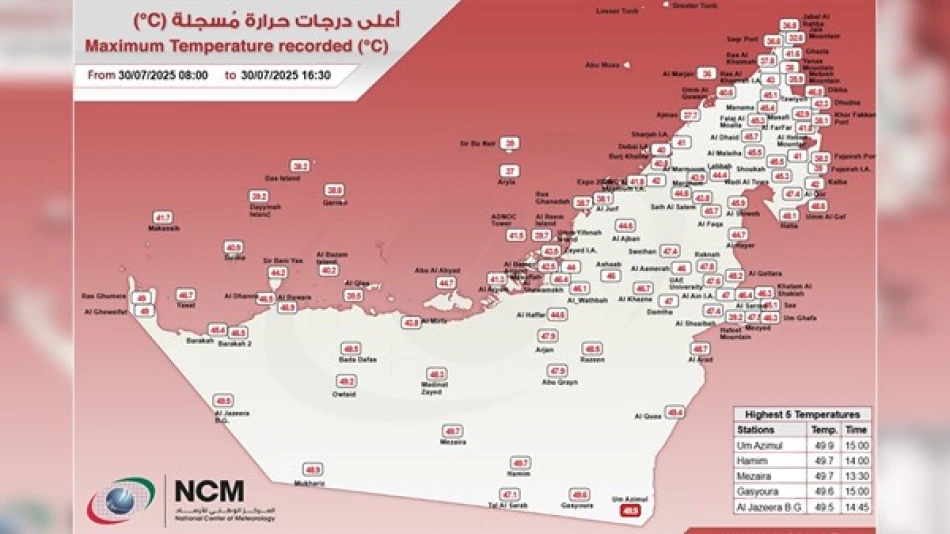
Scorching Temperatures Soar in Umm Al Zumul, UAE's Hottest Spot
UAE Swelters as Temperatures Soar to Near-Record 49.9°C, Highlighting Gulf Region's Climate Challenge
The United Arab Emirates recorded a scorching temperature of 49.9°C (121.8°F) on Wednesday, just shy of the country's all-time record, as the Gulf nation grapples with increasingly extreme heat that poses challenges for its energy infrastructure, outdoor workforce, and ambitious sustainability goals.
Record-Breaking Heat Strikes Al Ain
The UAE's National Center of Meteorology reported that the peak temperature was recorded in Um Azimul, located in the Al Ain region, at 3:00 PM local time. This reading brings the country dangerously close to its historical temperature record of 51.8°C, set in 2021, and underscores the intensifying heat patterns across the Arabian Peninsula.
Al Ain, known as the "Garden City" for its oases and greenery, sits inland in the eastern region of Abu Dhabi emirate, where desert conditions typically produce the country's highest temperatures during summer months.
Regional Context: A Gulf-Wide Phenomenon
The extreme temperature reading places the UAE alongside other Gulf Cooperation Council nations experiencing record-breaking heat this summer. Kuwait and Saudi Arabia have both recorded temperatures exceeding 50°C in recent weeks, while Qatar and Bahrain have similarly struggled with unprecedented heat indices.
This regional pattern reflects broader climate trends affecting the Middle East, which climate scientists identify as one of the world's fastest-warming regions. The area is heating at nearly twice the global average rate, with summer temperatures becoming increasingly difficult to manage even with advanced cooling infrastructure.
Economic and Infrastructure Implications
Energy Demand Surge
Such extreme temperatures place enormous strain on the UAE's electrical grid, as air conditioning demand peaks during afternoon hours. The country's energy consumption typically spikes by 30-40% during summer months, requiring careful load management and backup capacity planning.
For a nation that has invested heavily in renewable energy projects, including the world's largest single-site solar park, these temperature extremes present both challenges and opportunities for clean energy adoption.
Workforce and Outdoor Activities
The reading reinforces the importance of the UAE's midday work ban for outdoor laborers, implemented during summer months from 10:00 AM to 3:30 PM. With temperatures reaching nearly 50°C precisely during these prohibited hours, the policy proves crucial for worker safety.
Climate Adaptation Strategies
The UAE's experience with extreme heat has driven innovation in urban cooling technologies, from district cooling systems to heat-reflective building materials. The country's investment in climate-controlled environments, including covered walkways and underground passages, represents a model for other nations facing similar temperature challenges.
The timing is particularly significant as the UAE prepares to host COP28 later this year, positioning the nation as both a victim of climate change impacts and a leader in adaptation technologies.
Looking Ahead: Preparing for Hotter Summers
Wednesday's near-record temperature serves as a stark reminder that the Gulf region must continue adapting to increasingly extreme weather. As global climate patterns shift, temperatures approaching 50°C may become more frequent rather than exceptional, requiring sustained investment in cooling infrastructure, energy efficiency, and heat mitigation strategies.
The challenge extends beyond immediate comfort and safety concerns, touching on long-term economic competitiveness, urban planning, and the region's ability to maintain its position as a global business and tourism hub in an era of climate uncertainty.
 Layla Al Mansoori
Layla Al Mansoori







